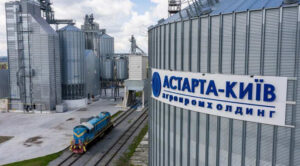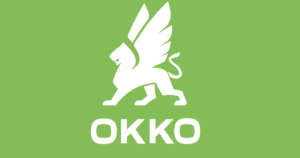
The OKKO Group plans to fully launch a EUR110 million bioethanol plant in the third quarter of 2026, according to the group’s CEO Vasily Danilyak.
“This year, we plan to complete the elevator and warehouse complex, which will enable us to receive corn from our cluster. We plan to fully launch the plant in the third quarter of 2026,” Danilyak said during the We Build Ukraine conference on Thursday, which was broadcast online.
He noted that total investment in the plant during 2024-2026 will amount to EUR 110 million, of which EUR 35 million will be the group’s own contribution and EUR 75 million will be debt financing. Of this, EUR 60 million was provided by the EBRD for a term of nine years, and another EUR 15 million by Raiffeisen Bank Ukraine for a term of seven years.
According to Danilyak, the plant’s annual capacity for bioethanol, demand for which is growing with the mandatory addition of 5% of this alcohol to motor gasoline from May 1, 2025, is 83,000 tons, and for animal feed – 70,000 tons. The plant’s annual capacity for corn processing is 270,000 tons.
As reported, in June 2024, the European Bank for Reconstruction and Development (EBRD) and OKKO signed a EUR60 million loan agreement at the Ukraine Recovery Conference in Berlin for the construction of a new bioethanol plant in Ukraine.
OKKO Group unites more than 10 diverse businesses in the fields of manufacturing, trade, construction, insurance, services, and other services. The group’s flagship company is Galnaftogaz, which operates one of the largest petrol station chains in Ukraine under the OKKO brand, with around 400 petrol stations. The founder and ultimate beneficiary of the group is Vitaliy Antonov.

On April 24, 2025, the Government of Albania officially suspended the agreement on mutual visa waiver with the Republic of Belarus signed in February 2020. This decision cancels the partial suspension introduced in May 2024, which applied only to diplomatic passports. Now Belarusian citizens are required to obtain a visa to enter Albania.
Earlier, in May 2024, Albania partially suspended the agreement, limiting visa-free entry for holders of diplomatic and service passports. The current measure completely abolishes the visa-free regime for all categories of Belarusian citizens.
The decision takes effect immediately and is published in the official gazette of Albania.
Source: https://t.me/relocationrs/881

Ukrainian boxer Oleksandr Usyk and British professional boxer Daniel DuBois will hold a heavyweight championship rematch on July 19 at Wembley Stadium in London, The Ring reports.
“Oleksandr Usyk’s rematch with Daniel DuBois for the Ring magazine world title and undisputed heavyweight champion of the world will now take place a week later – on July 19 at Wembley Stadium in London. The fight was originally scheduled for July 12,” the statement reads.
The reasons for the postponement of the fight are not reported.
As reported, in August 2023, Usyk defeated Dubois by technical knockout in the ninth round and retained the titles of the world’s leading boxing organizations.

Astarta Agro Holding, the largest sugar producer in Ukraine, increased its net profit by 34.5% in 2024 compared to 2023 to EUR83.25 million, according to the company’s report on the Warsaw Stock Exchange.
According to the report, consolidated revenue last year decreased by 1.1% to EUR612.15 million, while gross profit increased by 5.3% to EUR235.53 million and EBITDA by 9.6% to $159.35 million.
In hryvnia terms, Astarta’s revenue last year increased by 8.5% to UAH 26.531 billion, while net profit grew by 48.1% to UAH 3.634 billion.
It is noted that stable sea exports provided higher sugar sales compared to the previous year, partially offsetting the lower harvest of grains and oilseeds. Export sales of EUR395 mln accounted for 66% of consolidated revenue in 2024 compared to 53% in 2023.
The agriculture segment generated 34% of consolidated revenue or EUR209 mln in 2024 (-13% year-on-year). The main contribution was made by the sugar production segment with sales of EUR229 mln (+15% yoy), which accounted for 37% of total revenue in the reporting period. The soybean processing segment accounted for 17% of Astarta’s revenue or EUR106 million (-13% yoy). The livestock segment increased its sales by 25% yoy to EUR53 mln, accounting for 9% of total revenue in 2024.
The company attributed the increase in gross profit to a 35% or EUR 78 million increase in the fair value of biological assets and agricultural products, reflecting higher commodity prices.
Taking into account the data for the first nine months, Astarta’s financial performance in the fourth quarter of 2024 was slightly worse than in the fourth quarter of 2023.
It is also noted that operating cash flow increased in 2024 by 83% yoy to EUR167 million amid active inventory sales.
According to the report, investment cash flow increased by 30% to EUR52 million last year. The main investments were made to expand the fleet of beet harvesters, build a sugar silo and the production capacity of the soybean processing plant.
It is emphasized that Astarta’s net financial debt (excluding lease obligations) has turned into a positive cash position of EUR 21 million against EUR 39 million of debt in 2023.
As reported, in the first nine months of 2024, Astarta increased its net profit by 35.1% compared to the same period in 2023 to EUR75.60 million. The agricultural holding’s revenue increased by 12.6% to EUR441.46 million, and EBITDA by 12.8% to $131.56 million.
In 2023, the agricultural holding reduced its net profit by 5.0% to EUR61.9 million, and its EBITDA decreased by 6.1% to EUR145.77 million, while revenue increased by 21.3% to EUR618.93 million.
“Astarta is a vertically integrated agro-industrial holding company operating in eight regions of Ukraine. It includes six sugar factories, agricultural enterprises with a land bank of 220 thousand hectares and dairy farms with 22 thousand cattle, an oil extraction plant in Globyno (Poltava region), seven elevators and a biogas complex.

OKKO Group plans to fully launch a bioethanol plant worth EUR110 million in the third quarter of 2026, said Vasyl Danyliak, CEO of the group.
“This year we are going to fully commission the elevator and warehouse group and will be able to accept corn from our cluster. In the third quarter of 2026, we plan to fully launch the plant,” Danyliak said during the We build Ukraine conference on Thursday, which was broadcast online.
He noted that the total investment in the plant over 2024-2026 is EUR110 million, of which EUR35 million is the group’s own contribution and EUR75 million is debt financing. Of this, EUR60 million was provided by the EBRD for a period of nine years, and another EUR15 million by Raiffeisen Bank Ukraine for a period of seven years.
According to Danyliak, the annual capacity of the plant for bioethanol, the need for which is growing with the mandatory addition of 5% of this alcohol to motor gasoline from May 1, 2025, is 83 thousand tons, for livestock feed – 70 thousand tons, for corn processing – 270 thousand tons.
As reported, in June 2024, the European Bank for Reconstruction and Development (EBRD) and OKKO signed a EUR 60 million loan agreement for the construction of a new bioethanol plant in Ukraine at the Ukraine Recovery Conference in Berlin.
OKKO Group unites more than 10 diversified businesses in production, trade, construction, insurance, maintenance and other services. The flagship company of the group is Galnaftogaz, which operates one of the largest filling stations in Ukraine under the OKKO brand, with about 400 filling stations.
The group’s founder and ultimate beneficiary is Vitaliy Antonov.